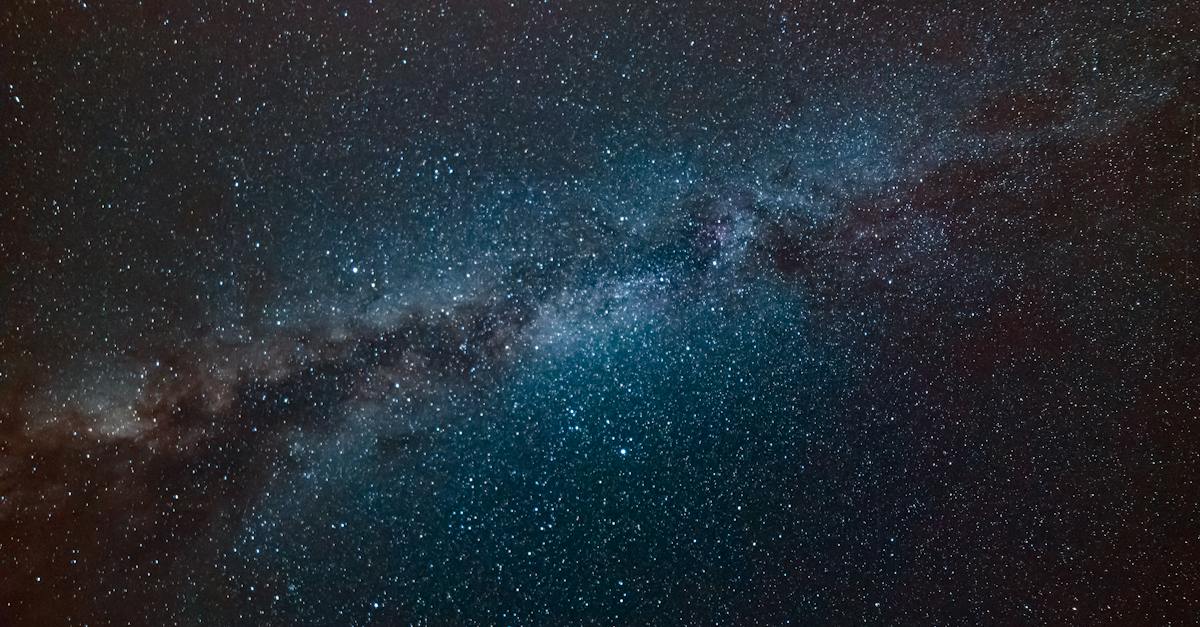This site contains affiliate links to products. I may receive a commission for purchases made through these links.
Stargazing’s a pastime that’s fascinated humans for millennia. But, it’s more than just admiring the night sky. It’s about understanding and identifying constellations and stars. In this guide, I’ll share some techniques to help you navigate the celestial sphere like a pro.
Ever looked up at the night sky and wondered, “What’s that star called?” or “Is that a constellation?” If so, you’re not alone. Identifying constellations and stars can seem daunting, but with the right techniques, it’s simpler than you think.
The History of Stargazing
Once upon a time, before GPS and smartphones, our ancestors looked at the heavens for guidance. They found stories in the stars and understood seasons through their eternal dance. This was the ancient practice of stargazing – an activity that has taken many forms across the centuries.
Stargazing is as old as civilization itself. Early civilizations in Babylon, China, and Greece were proficient in tracking celestial bodies. They developed sophisticated methods to chart constellations and predict celestial events. Take the example of the Babylonians, they were the first to recognize that astronomical phenomena are periodic and apply mathematics to their predictions. On the other side of the world, Chinese astronomers were producing star catalogs to help in the Emperor’s decision-making.
It wasn’t just science – the stars held cultural and religious significance too. The Greeks wove intricate myths around the constellations, lending each one a dramatic story. Centuries later, these stories still captivate us and add a beautiful layer of depth to our understanding of the stars. For instance, the constellation Orion isn’t just an arbitrary group of stars – it’s a legendary hunter from Greek mythology!
Navigating the stars meant survival for ancient seafarers. The Polynesians used the stars to navigate vast expanses of ocean, their knowledge of the night sky rivaled modern navigation technology.
Fast forward to the era of Galileo. His revolutionary contributions to astronomy – from building telescopes to fighting for the acceptance of heliocentrism – marked the transition from classical to modern astronomy. From then on, our understanding of the cosmos expanded exponentially.
Stargazing isn’t just history though – it’s a tradition that continues to evolve. So, let’s dive deep into understanding the constellations and stars without forgetting their sacred and scientific roots. As we connect the dots in the sky, we’ll realize that every constellation has its story and every star its secret. Secrets and stories that I’ll help you decipher so you won’t feel lost amid the vast celestial beauty.
What are Constellations?
Shining down from the black curtain of space, stars have been our constant companions. We’ve been cataloging them since ancient times. But what are these patterns we see in the night sky? They’re constellations, star patterns identified and named by ancient astronomers.
The word “constellation” comes from Latin constellatio, which means “set with stars”. In essence, constellations are simple imaginary lines connecting bright stars in the sky to form an recognizable pattern or figure. It’s interesting to note that these stars are not physically related; they’re located at different distances from us and from one another.
Historically, different cultures recognized different constellations, often tied to their own myths and traditions. Today, we use an internationally recognized set of 88 constellations that cover the entire sky. This system was adopted by the International Astronomical Union in 1922.
These patterns have served as navigation tools, calendars and a means to chronicle mythical stories throughout history. However, constellations are more than just ancient tools. For astronomers, they offer a handy way to map the sky and locate celestial objects.
Using the North Star (Polaris) as a reference point, astronomers are able to identify the location of other constellations and navigate the night sky. Given the Earth’s axis tilt and orbit, we are able to see different constellations at different times of the year. For example, Orion is best viewed during winter while Leo stands out in the spring.
So, at their most basic constellations help us to organize the night sky. They facilitate our understanding of where we are in relation to the cosmos. But they’re not just useful; they’re also a source of endless fascination, sparking curiosity and wonder about the universe we inhabit.
Having cleared up the concept, let’s dig deeper into recognizing these constellations in the night’s velvet expanse.
The Importance of Identifying Constellations and Stars
Ensuring the ability to spot constellations and stars is no small deal. There’s much more significance behind these twinkling light patterns in our vast sky than what meets the eye.
At the very base, constellations and stars serve as markers in the night sky. Take a look back into history. The Great Pyramids of Egypt were built to align precisely with specific stars of the Orion’s Belt constellation, proving their historical relevance. Historical relevance is one of the key reasons to identify constellations. Here’s a little data insight.
| Historical Event | Constellation Significance |
|---|---|
| Building the Pyramids | Aligned with Orion’s Belt |
Switch over to the present day, and you’ll find their purpose has expanded further. Now, constellations act as celestial compasses for astronomers around the globe. Another fact not to be overlooked is their role as signposts for amateur stargazers and astrophotographers. With proper identification, they can pinpoint other celestial bodies, including planets, nebulae, and galaxies, with ease.
Furthermore, didn’t people always look up to navigate around before the age of GPS? Sailors, in particular, heavily relied on stars for direction. If you’re lost at sea with no other means, the night sky could be your only hope. Navigational assistance is yet another crucial aspect for identifying constellations and stars. Have a look at the table below for some notable stars.
| Star | Constellation | Helpful for Navigants because |
|---|---|---|
| Polaris | Ursa Minor | Points towards the North |
| Canopus | Carina | Allows finding South in the Southern Hemisphere |
| Vega | Lyra | Depicts western direction during summer |
Asterism recognition also brings about a sense of human connection. Remember, humans have regarded these same star patterns over eons! There is a rich cultural and mythical tapestry woven around each constellation, celebrated across the globe in myriad forms.
So, as you can see, there is purpose and meaning in identifying constellations and stars. Whether it’s to understand our past, find our way, or just appreciate the beauty of the cosmos, their importance cannot be overstated.
Techniques for Identifying Constellations and Stars
Mastering the techniques for identifying constellations and stars can significantly enhance your experience of the night sky. It not only opens up a new realm of exploration but also gives a profound sense of connection to our ancestors as well as with the universe.
Firstly, familiarize yourself with the major constellations. Some of the most recognizable constellations include Orion, Ursa Major, and Cassiopeia. Knowing these patterns in the sky can serve as a guide when searching for less apparent constellations or isolated stars.
Secondly, using a star map or a star chart can be highly beneficial. They show the relative positions of constellations and stars. When held up to the sky, these maps can help orient you and act as a reliable guide. Nowadays, there are also several smartphone apps that make it incredibly easy to identify what you’re looking at in the night sky.
Additionally, investing in a decent telescope or binoculars can also make a world of difference. While many stars and constellations are visible to the naked eye, using magnifying equipment can reveal a much more detailed and fascinating celestial landscape. Equipment like this allows us to see far-off stars, distant galaxies, and even the rings of Saturn.
Here are some popular tools used for stargazing:
| Tools | Description |
|---|---|
| Star Chart | A map of the night sky |
| Smartphone Apps | Use GPS to identify constellations |
| Binoculars or Telescope | Magnify the night sky for detail |
| Astronomy Books | Provide detailed information about the stars |
Remember, practice makes perfect. The more you observe the night sky, the more familiar you’ll become with the celestial patterns and arrangements. So, continue exploring the cosmos and the beauty it offers using these techniques.
Using Star Charts and Mobile Apps
Moving on from the basics of identifying constellations and stars, we get to some more advanced tools. While nothing beats the hands-on experience of manual navigation and identification, star charts and mobile apps can indisputably enhance your stargazing experience.
Think of star charts as old-school GPS for the cosmos. They lay out the stars and constellations on paper, giving you a detailed diagram to read the night sky. Many charts even come with rotating overlays. These allow you to adjust your perception based on your location and the time of year, accommodating for the Earth’s changing position in its annual journey around the Sun.
For the tech-savvy stargazer, a wide range of mobile apps has been developed in recent years that makes celestial navigation even easier. These apps use augmented reality (AR) to overlay constellations and star names onto a live view of the sky- a feature that makes identifying celestial bodies as easy as pointing your device at the night sky. Apps like SkyView and Star Walk, for both iOS and Android, are worth considering.
Here’s a summary of these resources:
| Resource | Description |
|---|---|
| Star Charts | Detailed diagrams of the night sky. Can adjust for location and time of year. |
| SkyView App | AR app for celestial body identification. Available on iOS and Android. |
| Star Walk App | Similar to SkyView with additional features. Available on iOS and Android. |
While these tools can greatly enhance your stargazing, remember that they are just that- tools. They’re here to help you interact and connect with the cosmos in a more intimate way. Your eyes remain the best tool though; make sure to dedicate time to practice the manual identification of stars and constellations.
Now that we’ve covered star charts and mobile apps, let’s move on to delve into the world of telescopes and binoculars, which will offer a closer look at the heavenly bodies above.
Conclusion
I’ve taken you on a journey through the cosmos, introducing you to the art of identifying constellations and stars. We’ve explored the basics, from recognizing patterns in the sky to using advanced tools like star charts and mobile apps. Remember, while these tools can enhance your stargazing experience, they’re just aids. The real joy comes from manually identifying these celestial wonders. So, don’t forget to look up and let the night sky amaze you. As we move forward, I’ll introduce you to telescopes and binoculars, your gateways to a closer look at the universe. Keep stargazing and continue this celestial adventure.
What are star charts?
Star charts are detailed diagrams of the night sky which can be adjusted for location and time of year. They provide a map-like visualization of constellations, making it easier for stargazers to identify celestial bodies.
What are some examples of stargazing mobile apps?
There are many stargazing mobile apps available but two common ones are SkyView and Star Walk. These apps use augmented reality to overlay constellations and star names onto a live view of the sky.
How do these tools enhance the stargazing experience?
Star charts and mobile apps allow for a more detailed view of the sky, making it easier to identify constellations and celestial bodies. Nonetheless, manual identification without these aids is still beneficial and keeps the traditional stargazing skill alive.
What is the next topic to be discussed in the article?
The next part of the article will take a closer look at telescopes and binoculars, which offer an even more detailed view of celestial bodies and can further enhance the stargazing experience.



